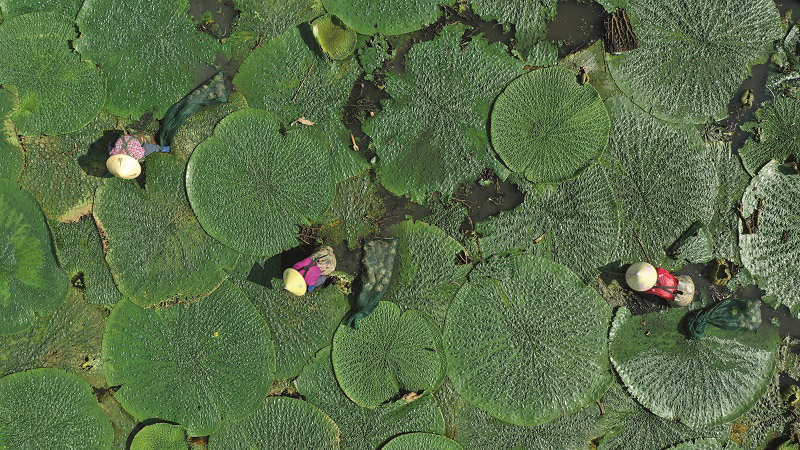A Bite of the Grand Canal

The Grand Canal is a waterway that connects not only the north and the south but also the present and the past of China. Wandering over 3,200 kilometers, it was the largest and longest artificial canal in the world.
After several ups and downs, it finally connected China’s five major water systems— the Haihe, Yellow, Huaihe, Yangtze and Qiantang rivers— and became the north-to-south water transportation artery in ancient times.
Every city linked by the Grand Canal has a special flavor which hearkens to both seasonal changes and the evolution of history. The great tastes gradually became embedded in the memories of generations living along the canal.

Inclusive wharf culture fostered open minds in canal cities. Cultures from all over the world stopped temporarily or permanently along the canal. Foods from different cuisines continue to influence each other and spread unique tastes and cultures to other places through the canal.
Traveling the millennia-old canal now usually involves navigating many great flavors. To some extent, the history of the Grand Canal reflects that of Chinese civilization. Cuisines along the Grand Canal consists of two volumes, Floating Feasts and Great Flavors along the River, which complement and complete each other by tracing the origins of food along the Beijing-Hangzhou Grand Canal, the Sui-Tang Canal, and the East Zhejiang Canal while reflecting on Chinese food culture. The mouth-watering writing on a variety of delicacies reveals numerous fascinating stories about canal foods that were once hidden within the pages of ancient books.


From Peking Duck to Hangzhou Old Duck Pot, from West Lake Fish in Vinegar Gravy to Carp with Noodles in Sweet and Sour Sauce, a specialty of Kaifeng in central China’s Henan Province, from ancient snacks to famous cuisines spread along the canal, from simple daily food and tea consumed by boat operators to exquisite delicacies enjoyed by wealthy salt merchants, the book paints a vivid and tasty picture of the Grand Canal by tracing the development of food and the nation.
While appreciating the delicacies, this book digs deep into the history of the Grand Canal and reviews the development and spread of canal delicacies. The diversion of a river could cause the rise or fall of a town along it, and a dredging project often kindled the birth of a delicacy.
When the capital of the Southern Song Dynasty (1127-1279) moved, wanderers brought baozi (steamed buns) cooking skills from Kaifeng to Hangzhou. Due to transportation of tax grains from the south to the capital in the north, the southern method of making soup baozi influenced the style of Tianjin steamed buns. In 1417, the Linqing section of the canal in today’s Shandong Province was blocked, so a diversion project was conducted to dig the Huitong River section. Retired working cattle from the river project created the possibility of “beef rolls,” which share a story similar to “beef culture” in Zigong, Sichuan Province.
From the Tang Dynasty (618-907) to the Ming Dynasty (1368-1644), many people of the Hui ethnic group flocked to the areas along the Grand Canal, and their unique food Halisa, a soup made of wheat kernels and beef or mutton sauce, also took root along the way, which gradually evolved into Xuzhou’s Sha soup, Suzhou’s Sa soup, and renowned Daming Lusa, a wheat porridge dressed with mutton sauce.
When Emperor Chengzu of the Ming Dynasty moved the capital to Beijing, Nanjing’s roast duck cooking style was also spread north to later be integrated with the hanging oven roasting method of the imperial kitchen of the Qing Dynasty (1644-1911), eventually evolving into the current mainstream hanging oven roast duck cooking method in Beijing.
As time passed, various foods from forgotten origins were scattered randomly on dinner tables on both sides of the canal like the pearls of a broken necklace. By following the Grand Canal, the book traces the development and changes of food and the nation and restores old and new stories of the waterway.